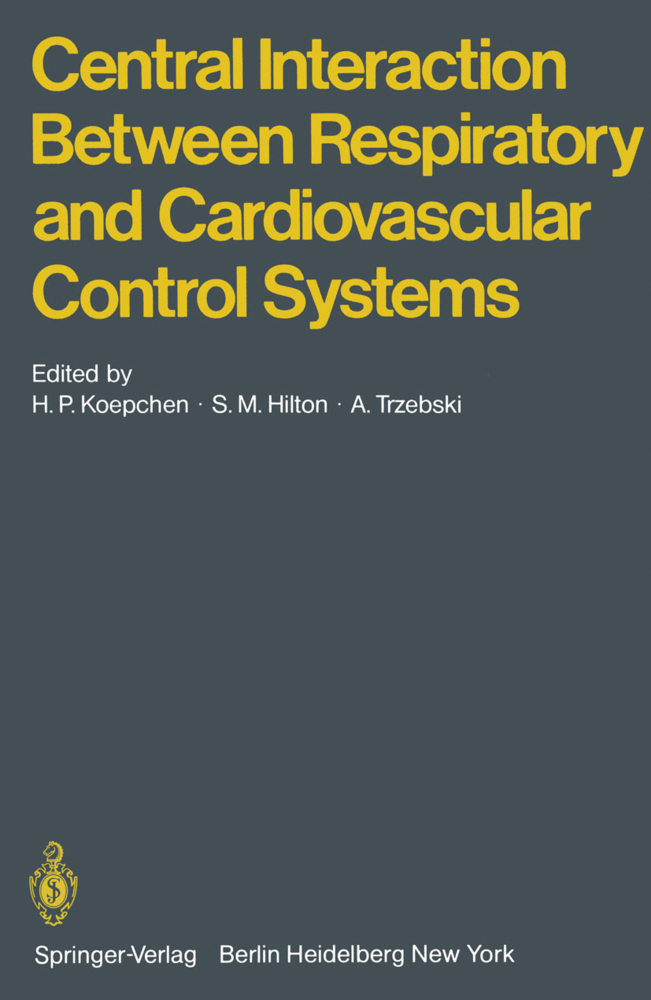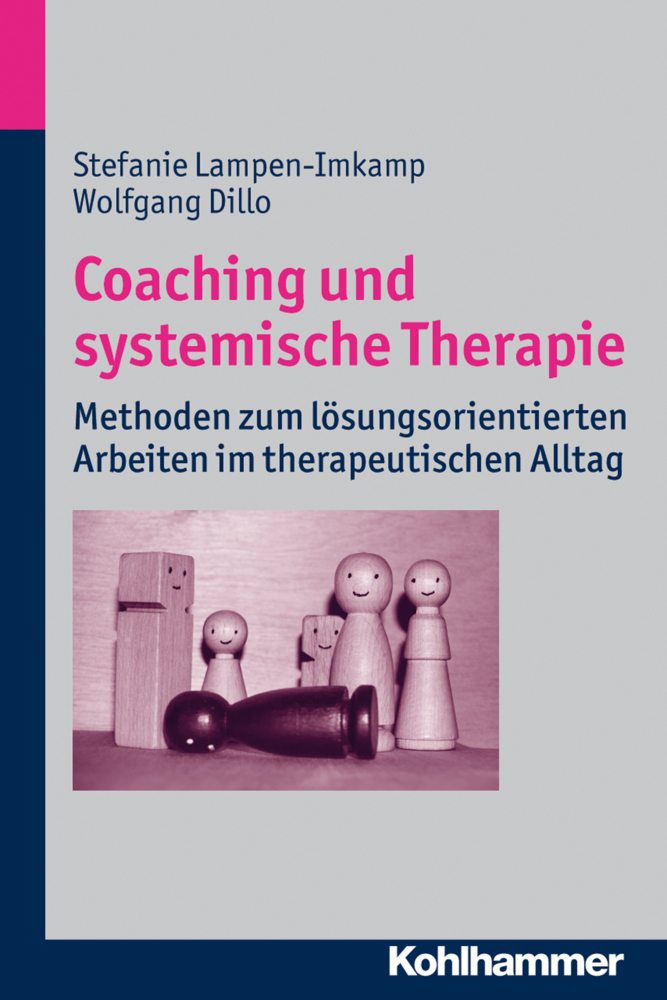Central Interaction Between Respiratory and Cardiovascular Control Systems
Central Interaction Between Respiratory and Cardiovascular Control Systems
This book presents the proceedings of a satellite symposium of the XXVllth International Congress of IUPS held in Berlin, July 12-15, 1977 the latest of a series of meetings dealing with the organization of the autonomic nervous system, especially its central nervous control (Warsaw 1971, Tokyo 1974, Heidelberg 1976). This was an occasion for the discussion of the rapidly increasing experience of laboratories and research groups in a number of countries. Interest is growing in the organization of the sympathetic and parasympathetic nerve supplies, and there is much new material derived largely from single unit re cordings within both central and peripheral nervous structures. It has long been known that various rhythms originating in central ner vous structures, including the respiratory rhythm, are reflected in autonomic outflows. Moreover, the autonomic responses themselves rarely appear in isolation, and are usually seen as part of patterns of change involving a number of organs and systems. These facts alone imply com plex interactions within the central nervous system, which indicate that studies of relationships between the relevant inputs, intrinsic central nervous activity and autonomic outputs constitute a special branch of neurophysiology which needs to be developed in order to gain insights into the forms of central nervous organization which are in volved.
Interaction of Central and Peripheral Inputs onto Vagal Cardiomotor Neurones
The Integrative Role of the Sympathetic Neurone
Spontaneous Activity Pattern and Anatomical Distribution of Brain Stem Reticular Neurones Showing Correlations with Phrenic and Renal Sympathetic Nerve Activities
Dynamic Characteristics of the "Unspecific Brain Stem System"
Session II: Ventral Surface of Medulla
Cardiovascular Effects of Drugs Acting on the Ventral Surface of the Brain Stem
Ventral Medullary Surface Stimulus Response in Relation to Ventilatory and Cardiovascular Effects
Effects of Stimulation of Chemosensitive Areas by Superfusion on Ventral Medulla and by Infusion into Vertebral Artery of Chemical Stimuli in Non-Anaesthetized "Encéphale Isolé" Preparations in Cats
Central Chemosensitive Mechanisms Involved in a Feedback Control of Peripheral Chemoreceptors
Session III: Inputs
Carotid Baroreceptor Input to the Cat's Brain - Where is the First Synapse?
Central Organization of Chemoreceptor Input
The Influence of Sensory Inputs from the Abdomen on Chemoreceptor Activity
Central Connections of Vagal Cardiac Receptors
Is There an Influence of Discharge Patterns of Neurones of the Common Brain Stem System on Neuronal Activity in the Dorsomedial Part of the NTS?
Session IV: Outputs
Respiratory Rhythmicities in Vasoconstrictor and Sudomotor Neurones Supplying the Cat's Hindlimb
Central Mechanisms of Interaction Between Sympathetic Preganglionic Neurons and the Respiratory Oscillator
Two Fibre Types in the Sympathetic Vasomotor Outflow Involved in Functional Differentiation: Their Linkage with the Respiratory Cycle
DifferentialSympathetic Responses to Stimulation of Arterial Chemoreceptors: The Laterality of Cardiac Sympathetic Nerve Response
Central Organization of Exercise Input
Session V: Influence of Central Nervous State on Response to Afferent Stimuli
Pulmonary Afferent Influences on Respiratory Modulation of Sympathetic Discharge
Central Modulation of Inspiratory and Expiratory Stimulations of the Carotid Body and Carotid Sinus Nerve
Respiratory Modulation of Vagal and Sympathetic Reflex Effects of Chemoreceptor and Baroreceptor Origin
The Respiratory-Cardiovascular Brain Stem Oscillator in the Context of Afferent and Central Excitatory and Inhibitory Systems
Central Respiratory-Baroreceptor Reflex Interaction in Man
Sympathetic and Parasympathetic Innervation of the Heart at Rest and Work in Man as Judged by Heart Rate and Sinus-Arrhythmia
Cardiovascular-Respiratory Interactions in Breath-Hold Diving
Final Round Table Discussion
1. Organization of the Input
2. Central Organization
3. Interactions Between Functionally Identified Systems.
General Introduction
Session I: Central Nervous Basis of Cardiovascular Respiratory InteractionsInteraction of Central and Peripheral Inputs onto Vagal Cardiomotor Neurones
The Integrative Role of the Sympathetic Neurone
Spontaneous Activity Pattern and Anatomical Distribution of Brain Stem Reticular Neurones Showing Correlations with Phrenic and Renal Sympathetic Nerve Activities
Dynamic Characteristics of the "Unspecific Brain Stem System"
Session II: Ventral Surface of Medulla
Cardiovascular Effects of Drugs Acting on the Ventral Surface of the Brain Stem
Ventral Medullary Surface Stimulus Response in Relation to Ventilatory and Cardiovascular Effects
Effects of Stimulation of Chemosensitive Areas by Superfusion on Ventral Medulla and by Infusion into Vertebral Artery of Chemical Stimuli in Non-Anaesthetized "Encéphale Isolé" Preparations in Cats
Central Chemosensitive Mechanisms Involved in a Feedback Control of Peripheral Chemoreceptors
Session III: Inputs
Carotid Baroreceptor Input to the Cat's Brain - Where is the First Synapse?
Central Organization of Chemoreceptor Input
The Influence of Sensory Inputs from the Abdomen on Chemoreceptor Activity
Central Connections of Vagal Cardiac Receptors
Is There an Influence of Discharge Patterns of Neurones of the Common Brain Stem System on Neuronal Activity in the Dorsomedial Part of the NTS?
Session IV: Outputs
Respiratory Rhythmicities in Vasoconstrictor and Sudomotor Neurones Supplying the Cat's Hindlimb
Central Mechanisms of Interaction Between Sympathetic Preganglionic Neurons and the Respiratory Oscillator
Two Fibre Types in the Sympathetic Vasomotor Outflow Involved in Functional Differentiation: Their Linkage with the Respiratory Cycle
DifferentialSympathetic Responses to Stimulation of Arterial Chemoreceptors: The Laterality of Cardiac Sympathetic Nerve Response
Central Organization of Exercise Input
Session V: Influence of Central Nervous State on Response to Afferent Stimuli
Pulmonary Afferent Influences on Respiratory Modulation of Sympathetic Discharge
Central Modulation of Inspiratory and Expiratory Stimulations of the Carotid Body and Carotid Sinus Nerve
Respiratory Modulation of Vagal and Sympathetic Reflex Effects of Chemoreceptor and Baroreceptor Origin
The Respiratory-Cardiovascular Brain Stem Oscillator in the Context of Afferent and Central Excitatory and Inhibitory Systems
Central Respiratory-Baroreceptor Reflex Interaction in Man
Sympathetic and Parasympathetic Innervation of the Heart at Rest and Work in Man as Judged by Heart Rate and Sinus-Arrhythmia
Cardiovascular-Respiratory Interactions in Breath-Hold Diving
Final Round Table Discussion
1. Organization of the Input
2. Central Organization
3. Interactions Between Functionally Identified Systems.
Koepchen, H. P.
Hilton, S. M.
Trzebski, A.
| ISBN | 978-3-540-09948-2 |
|---|---|
| Artikelnummer | 9783540099482 |
| Medientyp | Buch |
| Copyrightjahr | 1980 |
| Verlag | Springer, Berlin |
| Umfang | IX, 244 Seiten |
| Abbildungen | IX, 244 p. 18 illus. |
| Sprache | Englisch |










